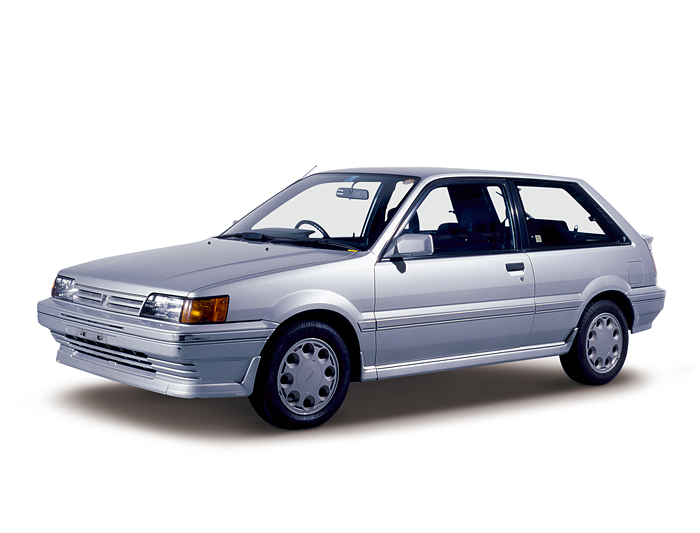- No.257
Pulsar 3-door Hatchback Milano X-1 Twin-cam (1986 : EN13)
Compact
Specifications
- Overall length / width / height
- 4,030/1,640/1,380mm
- Wheelbase
- 2,430mm
- Tread (front/rear)
- 1,425/1,420mm
- Curb weight
- 1,030kg
- Engine
- CA16DE (4-cyl. in-line, DOHC), 1,598cc
- Engine Max. power
- 88kW (120PS)/6,400rpm
- Engine Max. torque
- 137Nm (14.0kgm)/5,200rpm
- Transmission
- 5-speed MT, floor shift
- Suspension (front, rear)
- Strut, parallel link
- Tires
- 185/60R14 82H
Download
- High resolution image 2,400x1,800pix
- Low resolution image 640x480pix
Related information

The first-generation Pulsar, the N10, was launched in May 1978 and following two full model changes, the N13 was launched on May 7, 1986.
The N13’s distinguishing feature was its sporty styling, which combined flowing curved surfaces and sharp lines. Three body types were available: the 3-door hatchback, the 5-door hatchback, and the 4-door saloon. There were also five engines: 4 gasoline (1,300cc, 1,500cc, and 1,600cc twin-cam) and a diesel engine (1,700cc). Altogether, there were 33 basic models in the lineup.
The Milano X1 series was a sports-grade model available as a 3-door hatchback or 4-door saloon. The X1 twin-cam was positioned as the sportiest model, at the top end of the series.
What attracted attention to this model, together with its newly developed 1,600cc twin-cam engine, was Japan’s first fully automatic full-time 4WD (viscous coupling type), adopted for the 4-door saloon 1500J1. This ground-breaking 4WD system - which automatically ensured optimal torque distribution to the front and rear wheels, providing an easy, safe drive - was highly praised; in fact, it was singled out in the awarding of the 1986-87 Japan Car of the Year title.
In January 1987, to commemorate winning the 1986-87 Japan Car of the Year Award, the world’s first triple-viscous, fully automatic full-time 4WD car (Milano X1-E) was launched as a limited-edition model, and available as an option for the Milano X1 twin-cam was Japan’s first viscous LSD.